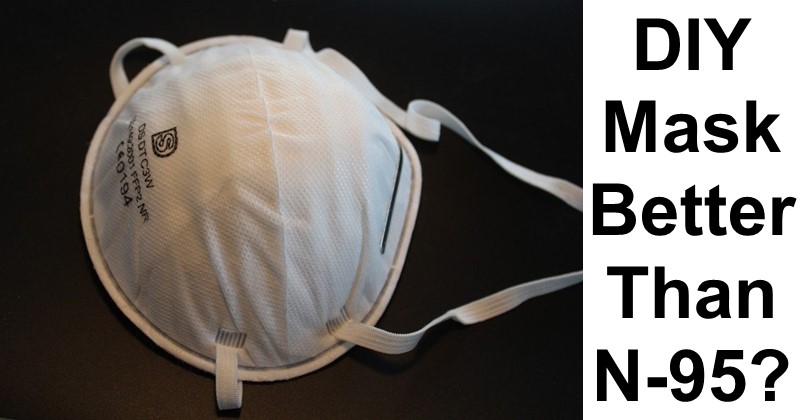A few weeks ago a nice lady, Donna, sent me an email talking about many things, one of which was making your own DIY masks from HVAC filter material since there’s been a shortage of N-95 masks. I thought that was an interesting idea but, because I already had some N-95 and other masks myself, I felt no need to go out a try it. Besides, I did wonder just how effective such an idea would truly be considering it was homemade.
Then yesterday I ran across this article which discusses how a nurse in Texas has been making DIY masks from HVAC filters very similar to what Donna had talked about. In the article the nurse stated that, “The mask has a filtration rate of 99.5 percent with one material and has a 97.8 percent filtration efficiency with another material we are using.” That’s amazing if it holds true!
Of course, this assumes a perfect fit which, as we’ve seen before, is difficult to properly achieve due to many factors, but that can be said of any mask whether DIY or purchased off the shelf.
By now you must be wondering what type of filter you would need to make this happen. Well, the video from the aforementioned article says that she used MERV 13 filters to create the 97.8% filtration masks, but doesn’t specify which filter she used for the 99.5% filtration masks. Shortly thereafter I quickly realized that I know nothing about HVAC filter ratings as I apparently just go buy whatever looks good at the hardware store, lol.
Anyway, this post has a good diagram showing the difference in MERV ratings. Suffice it to say that MERV ratings range from 1 to 20, with 20 being the best, though it looks like they’re difficult to purchase locally. Interestingly, you’ll want a filter with an MERV 17 rating or higher to filter out viruses specifically, according to the chart. That said, a lower rated filter may still be capable of filtering out virus-carrying contaminants.
Ok, so how do you make one? Here, again, we’re in luck since the same article with the MERV rating diagram also includes a handy DIY guide on making your own filters which eventually links to this NY Times article on how to sew a fabric mask if you’re interested.
The bad news is that, as you might suspect, the HVAC filter makers “…did not recommend any of their products be used in a DIY effort to make masks. These products have not been tested for this purpose. We won’t knowingly sell filters to anyone who is going use them for mask efforts.”
So, that’s a problem and maybe something to seriously consider. After all, you don’t really know what else is contained in those HVAC filters. There could be some odd material in there which could make you sick or cause you to have an unexpected allergic reaction!
And that’s not all. The same article states that people are trying to make masks from all sorts of materials:
“Our visitors have told us many of their ideas. Some are using filters from big box stores. Some are using HEPA vacuum cleaner bags. Others are using drier sheets… One of the ideas that have been floated to me is the use of HEPA Vacuum cleaner bags. An astute visitor to our site let me know this might not be a very good idea. She shared a link with me to a study that basically questions the use of Vacuum Bags as a suitable material.”
As much as I love hearing about and trying DIY or makeshift projects, maybe it’s time to calm down and not do something that will inadvertently make you sick or worse?
Do the right thing, keep your distance, wash your hands, and be very wary about using something in such an unintended manner when it’s so closely related to your health and safety.

Leave a Reply